(continued from Part 2)
As a recap, I will try to summarise the position put forward by North and Booker in a number of articles and blog posts:
- During 1999-2000 the MPs of the EFRA Committee wanted to replace the existing fire standard EN 13501-1 with one based on a more realistic large-scale test (now BS 8414);
- They were unable to do so because as EU members we were obliged to adopt the European standard EN 13501-1;
- EN 13501-1 is based on the small-scale surface test EN 13823;
- This surface test is quite inadequate to test products with good surface ratings but combustible cores;
- If we had been able to make BS 8414 mandatory, then the Grenfell Tower fire would never have happened, since the system employed there would have failed the test;
- The EU was laggardly in developing a large-scale test which could then have been made compulsory;
- Because of point 2 and point 6, the EU bears a measure of responsibility for the fire.
I pointed out in my last post that in 1999-2000 the cladding regulations were based on four British standards BS 476 parts 7, 6, 11 and 4, and not on any European standard. Nevertheless the European standard was introduced in 2002 and its adoption was indeed compulsory. So the prospect of its adoption could conceivably still have influenced decision-making at an earlier date.
I also showed that the EFRA Committee recommended two routes to compliance:
a) through use of non-combustible materials, or
b) through a large-scale system test.
I then observed that in 2005 Scotland adopted a regulatory approach almost identical to that recommended by the Committee.
Since England and Wales are in the EU as much as Scotland is, it follows that we were also free to adopt this approach.
According to North, EN 13501-1 is based on a surface test only. The question then arises as to how Scotland has implemented their approach, with one route to compliance being through the use of non-combustible materials, if the only test available is a surface test?
The answer, very simply, is that North is mistaken and that EN 13501-1 is a classification standard which ranks construction products according to their performance in two or more of four tests, of which two are surface tests, and two combustibility tests. We are therefore free to raise our regulatory requirements at any time, simply by specifying a higher Euro Class.
I will begin by showing that this has been North’s understanding of EN 13501-1, and then explain the real situation.
north 18 June 2017
North falls into this trap in his first post on Grenfell Tower. As he often does, he goes straight to the heart of the real issue at Grenfell Tower, the inadequacy of the existing Approved Document B guidance. He first cites the national class requirement of Class 0, and points out that it relates to a surface test (actually two tests, BS 476 parts 7 & 6). He observes that a composite panel with aluminium surface can pass this test, but that the combustible core can be exposed in a real fire (not particularly from the cavity as he puts it because the aluminium is on both sides of course):
He then introduces the Euro Class requirement of EN 13501-1 Class B-s3, d2, and states correctly that the national requirement is no more severe than it (he does not explain that these are two alternative routes to material compliance, but since they are broadly equivalent, it matters little):
Since he has explained that national Class 0 is inadequate and that Euro Class B is equivalent to it, North might profitably at this point have asked what Euro Class A is, how it is achieved, what test it is based on, and whether we could make it obligatory for cladding materials.
Instead he launches an attack first on the European standard itself, claiming that it is ‘known to be deficient’, and secondly on the testing of individual components rather than of whole systems:
On the first point, North links to an article by Sarah Colwell, the main author of BR 135, which contains criteria to judge whether a system has passed the BS 8414 test.
She describes a project in which the BS 8414 test method is compared with BS 476 parts 6 & 7, and with the EN 13501-1 equivalent. She says that:
for the purposes of this study
the relevant European test standards were EN 13823 (the Single Burning Item test, SBI) and EN ISO 11925 (the ignitability test).
These British and European tests were chosen because they are the ones relevant to the Approved Document B guidelines as they now are. They are the tests required to achieve a national Class 0 or a Euro Class B.
She finishes the article by saying that material and individual component testing did not necessarily predict overall system performance. She doesn’t say so, but one possibility might be that the components would pass the material tests but fail the system test. Then this would indicate that a dangerous system might get through the system by taking the route of testing the individual parts of the system.
What North may have missed, I suspect, is that the choice of national and European test standards that Colwell was using for the comparison was determined by our national regulations. If we raise the requirement to Euro Class A, as we are free to do, then different and much more effective material tests come into play.
North said in the quotation above that not even the ‘most rigorous’ testing would predict system performance. That may be true in itself, but the crucial point is that this is not the most rigorous testing available. The more rigorous tests may not predict overall system performance very precisely but what they will effectively do is fail any system that would fail the system test. And that is what we need to be safe.
north 28 june 2017
On 28 June North stated explicitly that ‘the test procedure in respect of EN 13501 [should be 13501-1]’ is the Single Burning Item test, which is specified in EN 13823:
This is a major mistake on North’s part, which is at the core of his and Booker’s misunderstanding of the situation. EN 13501-1 is a classification standard, which classifies construction products according to their performance not in only one test, but in two or more of four tests. As he says, the test procedure in respect of this standard was laid out in Commission Decision 2000/147/EC:
Article 1 provides that any construction product which might contribute to a fire must be classified according to the system set out in Tables 1 & 2:
Table 2 is for floorings, so it is Table 1 that is relevant here:
It can be seen from the second column that not one only but a total of four tests were to be used to classify products:
- EN ISO 11925-2, ‘Ignitability of building products subjected to direct impingement by a flame — Part 2: Single-flame source test’;
- EN 13823, ‘Building products excluding floorings exposed to the thermal attack by a single burning item’;
- EN ISO 1716, ‘Determination of the gross heat of combustion (calorific value)’;
- EN ISO 1182, ‘Non-combustibility test’.
I described all four tests briefly in an earlier post. The crucial two points to grasp are:
- Two of the tests, EN ISO 1716 and EN ISO 1182, are combustibility tests, not surface tests;
- At least one of these two tests must be passed to achieve a Class A2 rating.
Under EN ISO 1716, also known as a bomb calorimeter test, 50 g of the material is ground into a powder or at least cut into small pieces. The whole sample is combusted in an atmosphere of pure oxygen.
To pass the test to A2 grade, the heat released in combustion must be less than or equal to 3 MJ/kg. No product with a substantial plastic component will satisfy this criterion. The heat of combustion of PE is around 45 MJ/kg, that of PIR around 26 MJ/kg.
Under EN ISO 1182, a small cylindrical sample (4.5 cm diameter, 5 cm high) is placed in a holder, lowered into the centre of a furnace at 750° C, and kept there for 30 minutes or more. If the product is thinner than 5 cm, it is built up to 5 cm ± 3 mm by using a number of layers, held together with steel wires.
To pass the test the sample must retain at least half of its mass, not flame for more than 20 or 25 seconds, and the temperature anywhere must not rise at any time more than 50° C above the final furnace temperature. Plastics will ignite and burn up at this temperature, and the aluminium will melt and fall through the specimen cage. Even an advanced carbon foam lost 33% of its mass in this test, as described in this video:
If it was felt that one these tests was not rigorous enough for the application to which a product was to be put, then Class A1 could be specified. To achieve this higher grade, both tests have to be passed and the criteria are more demanding. The heat of combustion must be ≤ 2,0 MJ/kg and in the furnace test, the sample must not flame for more than 5 seconds, and the temperature rise must not be greater than 30° C.
If a cladding system were composed of A1 products then it would certainly pass a BS 8414 large-scale system test. I described a comparative test of three systems in an earlier post. The highest temperature recorded (p. 365) for any of the systems was just over 700° C, and that only momentarily. Surface temperatures on the mineral wool system (blue in the graph) remained below 500° C:
A material that hardly flames at 750° C will not fail in such conditions, it seems to me.
The adoption of EN 13501-1
EN 13501-1 was approved by CEN on 15 November 2001. The official English language version is BS EN 13501-1:
Section 5 lists the four test methods used for the classification system (along with a fifth, not shown, for floorings only), and describes the purpose of each one and the classes they are relevant to:
The non-combustibility test, EN ISO 1182:
identifies products that will not, or not significantly, contribute to a fire, regardless of their end use.
We only have to require an Euro A1 grade for a particular end use, to ensure the employment of non-combustible products. The European classification standard EN 13501-1 thus presents no obstacle to requiring non-combustible products where appropriate.
withdrawal of conflicting standards
According to North (28 June), the reason that the Government did not implement the recommendation of the Committee (or rather, what North believes was its recommendation) to replace existing standards with the system test BS 8414 was that we had to withdraw conflicting standards:
Now an obvious problem with this argument, such as it is, is that BS 8414 has not been withdrawn, and in fact plays a part in the current regulatory system for cladding systems (at AD B2, 12.5). Perhaps aware of this, North seems to adjust his case somewhat in the same post to say that EU standards ‘take precedence’ over national ones:
EN 13501-1:2002 did indeed require (p. 5) that conflicting national standards be withdrawn:
And in fact, to the best of my understanding, there has been a partial withdrawal of national standards, but not of BS 8414. EN 13501-1 is a classification system, as in its title shown above, ‘using test data from reaction to fire tests’. The potential conflict therefore is with the national reaction to fire test standards and classification system.
The BRE conducted a study, published in 2012, on the impact of the introduction of the European fire test and classification standards on wallpaper and other decorative linings. The product is different but the relevant standards are the same (with one additional European standard related to substrates):
The Construction Products Regulation was about to replace the Construction Products Directive the following year, 2013. For products covered by a harmonised standard, CE marking was to become compulsory, and fire performance would have to be declared under the Euro class system not the national system (p. 3):
The implication of this is that the national fire test standards themselves will not be withdrawn at this time. But they are becoming inoperative for products covered by a harmonised standard.
correlation of european and national standards
The BRE explain that the Euro classes were first introduced into the building regulations in 2002, alongside the national classes, through Amendments to Approved Document B. The two classification systems were correlated by carrying out both national tests and Euro tests on the same products (p. 4):
For linings, the correlations were shown in Table 10 of the 2002 Amended Edition:
National Class 0 was correlated with Euro Class B, Class 1 with Class C, and Class 3 with Class D. Not surprisingly, the higher classes do not feature. It would be an unusual wallpaper that could survive at 750° C or have a low heat of combustion. The relevant tests then are BS 476 parts 7 (‘surface spread of flame’) and 6 (‘fire propagation’), and EN 13823 (‘single burning item’) and EN ISO 11925-2 (‘ignitability’).
The BRE found that the criteria for meeting Euro Class B were more demanding than those for national Class 0. For heavy duty wall coverings in particular, many products which had previously achieved Class 0 failed the Class B test:
The BRE comments that the SBI room corner test, which North criticises, is more realistic and demanding than the national tests it is replacing:
In justification of my previous description of SBI as a surface test, I believe that what the BRE are saying is that although it is the surface of the material that is attacked, the duration and intensity of the flame means that the material behind the surface is affected more. Also the joint at the corner has to withstand the attack:
In comparison, BS 476-7 would seem to be, as the BRE says, less demanding:
The following table from a technical information sheet by Chiltern Fire, then a Notified Body under the CPD, shows the correlation between all the national and European reaction to fire classes. The sheet refers to the same government project (Radar 2) to correlate the two classification systems as is described in the BRE report on linings (p. 8). It covered (BRE Report, p. 8) not only linings but 75 products from eight different product sectors. The Chiltern Fire table:
correlation in the cladding regulations
These correlations can be seen to have been applied in some of the regulations for cladding systems for high buildings. According to AD B2, 12.6 and Diagram 40, external surfaces above 18 m should be national Class 0 or Euro Class B:
As shown in the table above, and as discussed earlier, the relevant tests to achieve these grades are BS 476 parts 7 (‘surface spread of flame’) and 6 (‘fire propagation); and EN 13823 (‘single burning item’) and EN ISO 11925-2 (‘ignitability’).
According to AD B2, 12.7, insulation products are required to be of limited combustibility, and the criteria to be met are shown in Table A7 (p. 130). I show only part of the definitions below, just to show the broad principle of the correlation:
Under the national system, materials are to be tested to BS 476 part 11 (‘Method for assessing the heat emission from burning materials’). This is a 750° C furnace test. The apparatus is identical to that employed in EN ISO 1182, and the sample size is also the same. For materials with density less than 300kg/m3 (such as mineral wool insulation) the product should not flame for more than 10 seconds, and the temperature rise should not be more than 35° C; for denser materials (like ACM cladding, for example) the effective limit is 5 seconds (since it is only ‘sustained’ flaming of duration greater than 5 seconds which is measured, according to both BS 476-1 and EN ISO 1182), and the maximum temperature rise allowed is 20° C.
As explained above, there are two alternative ways of achieving Euro Class A2, with the result that materials with calorific value less than 3 MJ/kg can be A2 grade, even if they would be unable to pass the furnace test. I rather think that the A2 grade ACM panels must be using the EN ISO 1716 calorific value test route to compliance, for two or three reasons. First, the aluminium would melt in the 750° C furnace, and second, the polymer component of the core would combust, probably flaming for more than 20 seconds and raising the temperature in the specimen more than 50° C. Also, I notice that the government is only doing calorific value tests in its current testing program on the panels, which suggests that they take it for granted that they would fail the furnace test (Explanatory Note, Annex A.5):
It seem to me therefore that Euro Class A2 is rather less demanding than the national ‘limited combustibility’ category. A2 grade ACM panels achieve the former but could not achieve the latter, I think. They could not, however, achieve Euro Class A1, which seems broadyly similar to both the national ‘limited combustibility’ grade and the ‘non-combustible’ grade.
harmonised and non-harmonised product types
A harmonised standard, EN 13165, for factory made rigid polyurethane (including PIR) foam thermal insulation products was approved by CEN in 2001 (version with 2004 amendments shown):
A 2004 Amendment required that a reaction to fire classification had to be determined for such products in accordance with EN 13501-1:
The EN 13501-1 classification was to accompany the CE marking for the product:
As I understand it, therefore, the national fire reaction classes are effectively moribund for a PIR insulation product like the Celotex RS5000 employed on Grenfell Tower.
In passing, it therefore seems odd that Celotex continue to claim (16 June 2017) a national Class 0 rating for their RS5000 product:
while, on their Declaration of Performance (1 December 2016), they say that they have not determined a reaction to fire performance for the product, even though they admit that it is covered by BS EN 13165:2012+A2:2016:
I wrote to St Gobain UK’s Communications Director on 7 July, requesting an explanation but so far have not received a reply.
So far as I have been able to ascertain, ACM rainscreen cladding panels are not covered by a harmonised standard. Composite insulating panels are covered by EN 14509, which specifically limits its coverage to cores composed of PUR, PIR, EPS, phenolic and other named insulating materials. Aluminium cladding sheets are covered by EN 14782. Sheets with coatings are included, but not composite construction.
If they are indeed not covered then, as I understand it, compliance to Approved Document B can be achieved either through either national class or Euro Class. Either national Class 0 or Euro Class B is required to meet the requirements of AD B2, 12.6 and Diagram 40. Since Class B is probably the somewhat higher grade based on the more rigorous test, the introduction of an optional Euro route will not have resulted in any weakening of the regulatory system for cladding.
For cladding panels which are covered by a harmonised standard, so that Euro Class B is now compulsory, there will I think have been a slight raising of the safety level required from national Class 0 to Class B. Probably the only practical impact would be on timber cladding, which is covered by harmonised standard EN 14195, and which can in some cases (p. 27) achieve high surface ratings through fire resistant treatments.
effect of the introduction of en 13501-1
The introduction of EN 13501-1 has resulted in a gradual and as yet incomplete transition from one reaction to fire classification system to another broadly similar one. The British government appears to have been scrupulous in preventing any deterioration of safety levels by commissioning a major study to correlate the grades of the two systems.
With regard to the external surface requirements of AD B2, 12.6 and Diagram 40, the Euro Class B requirement is no less severe than the existing national Class 0 requirement, and probably somewhat more so.
With regard to the requirements of AD B2, 12.7 and Table A7 for insulation products and filler materials (etc.), the Euro A2 class appears to be somewhat less demanding than the national ‘limited combustibility’ class. It is doubtful however whether this makes any practical difference with respect to the main available products. No polymer based products will achieve either Euro Class A2 or the national ‘limited combustibility’ class. All mineral wool or glass wool products will likely achieve both classes and indeed may achieve Euro Class A1 and national class ‘non-combustible’.
has the euro standard prevented the government from raising cladding safety levels?
The introduction of the European reaction to fire classification system EN 13501-1 was obligatory. The national government and devolved administrations remained completely free to choose the level at which requirements should be set. As I described briefly in my last post, in 2005 Scotland raised the requirement for all cladding materials to what they termed ‘non-combustible’. This category could be obtained either through national standards or through European standards (2.C.Table, p. 177 of pdf):
Materials were counted as non-combustible, under the European system, if they achieved Class A1 or A2 or were 99% or more inherently incombustible. ACM cladding was therefore permitted, if it achieved the A2 grade, even if it would not have achieved the national ‘non-combustible’ grade as defined by Scotland according to testing to BS 476 parts 4 or 11 (both 750° C furnace tests).
But Scotland was entirely free, if it so chose, to limit its non-combustibility category to include only A1 products and thus effectively exclude all ACM products.
Likewise, there was nothing to prevent the England & Wales requirement being raised to A2 for all cladding materials, or to A1 if we had so preferred. The choice and the delinquency was entirely ours. No responsibility at all rests upon the European Union or our membership of it.
Andrew Chapman
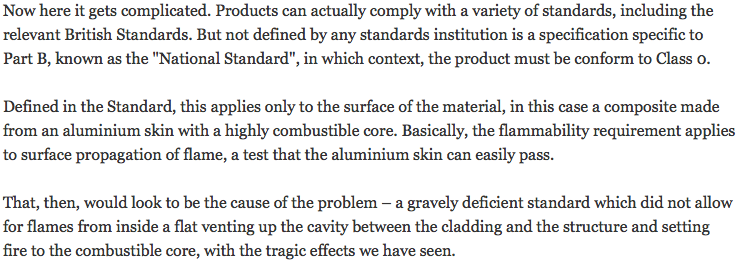




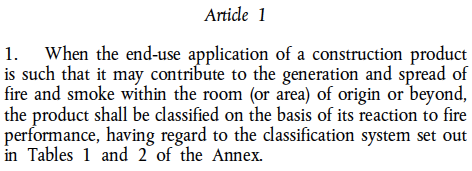
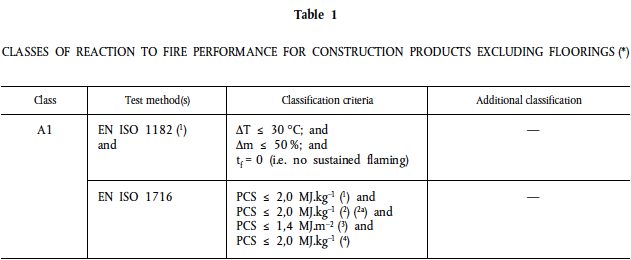
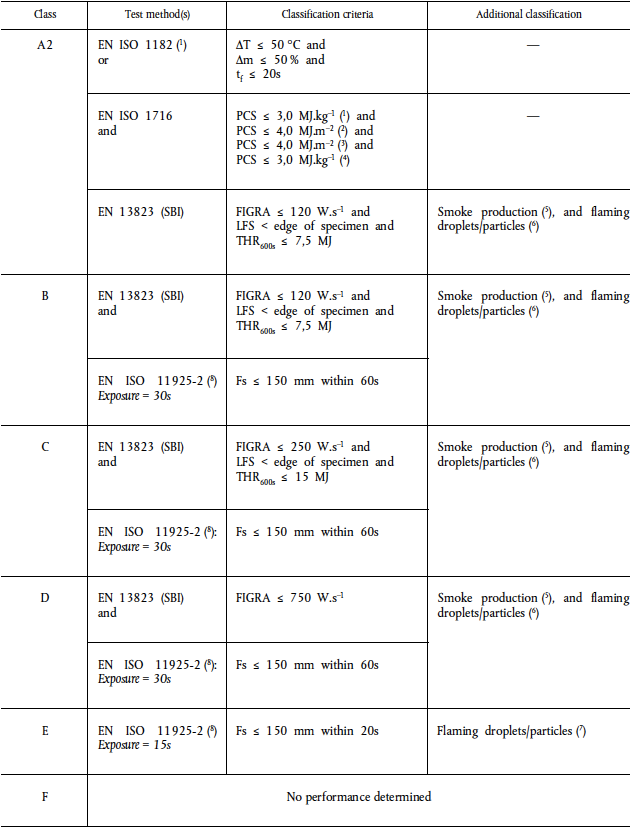


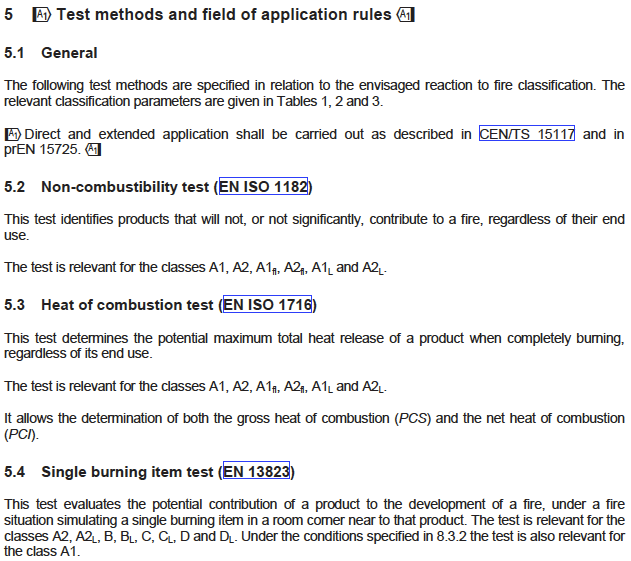




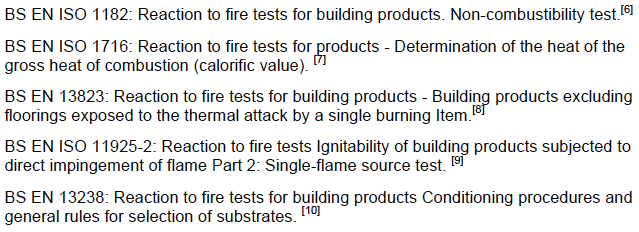


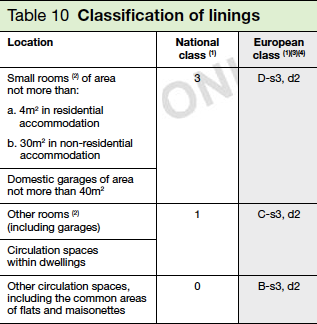



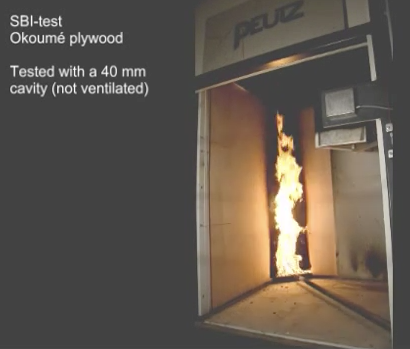
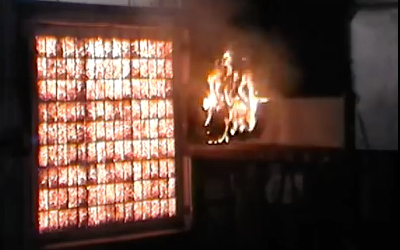
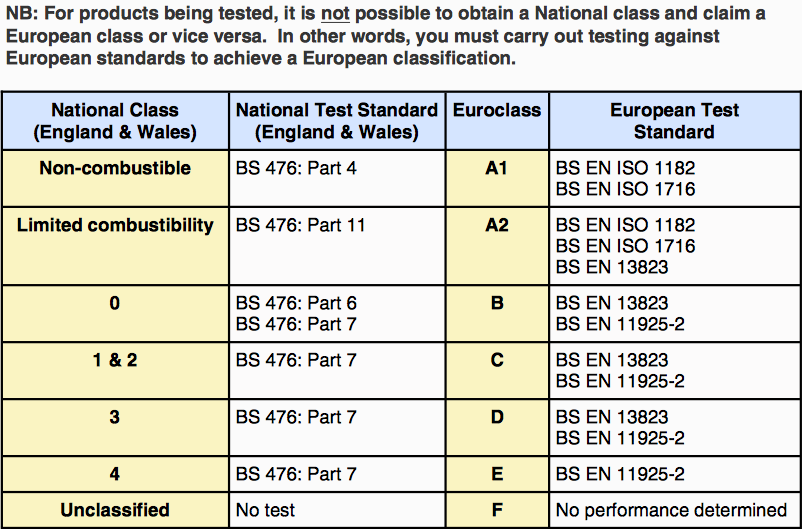
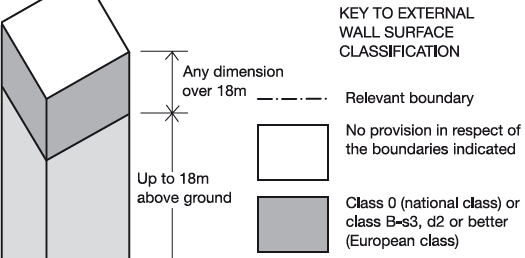
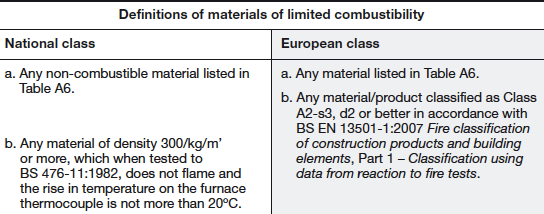

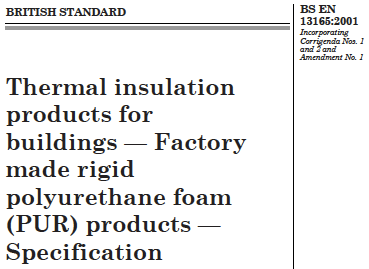


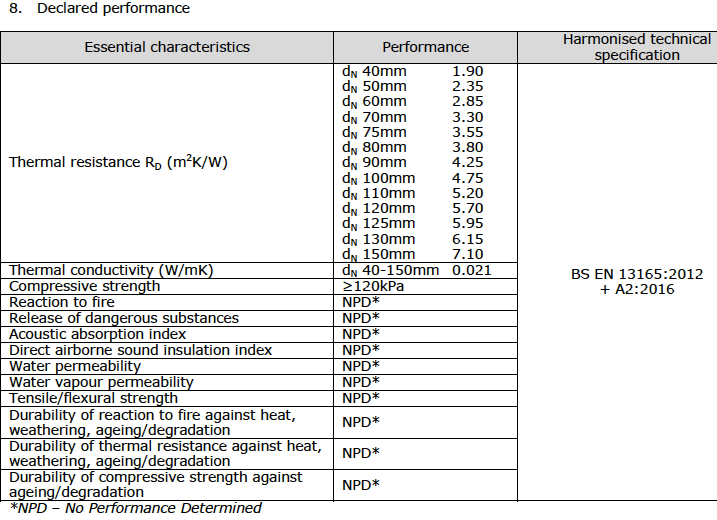
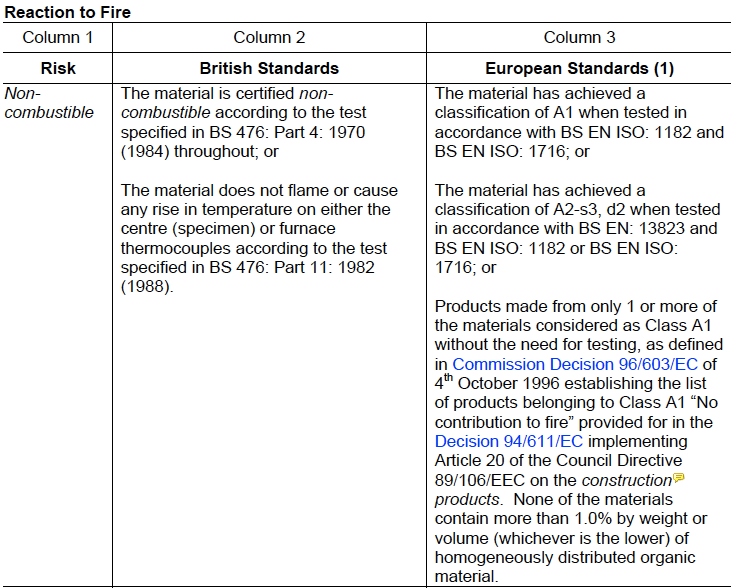
I think Booker was completely confused by the fact the EN 13501-1 was a classification system, but consisted of different test methods which gave different grades. There was nothing stopping, as you say us raising the requirement to limited combustibility or A2, or better.
I am very interested to see BRE’s wallpaper tests and the fact they found Class 0 was a weaker test than its European counterparts – I have come across the same indication, as Alucobond PE and Alpolic PE both have Class C-D European rating but a Class 0 UK rating.
http://www.alpolic.com/alpolic-intl/downloads/cat_alpolic_alpolicfr.pdf
https://web.archive.org/web/20160620173451/http://www.alucobond.com/alucobond-fire-classification.html
Alucobond PE was withdrawn from sale around September of last year, and they made a statement after Grenfell noting that Alucobond Plus is now their standard product and A2 what they recommend for high rises
http://www.alucobond.com/news1.html?&no_cache=1&L=0&mode=single&postid=162046383416
They also seemed to have had rushed BRE BS 8414 tests done and noted, but results only available on request
http://www.alucobond.com/news1.html?&no_cache=1&L=0&mode=single&postid=162621697071
Also a note about what BBA certs do and don’t do (mirrored from the BBA site?)
http://www.alucobond.com/news1.html?&no_cache=1&L=0&mode=single&postid=162816005256
Thanks a lot, John. That Alpolic PE is Class 0 but Euro C-D is striking. Second link not working for me.
Very interesting that Alcubond seem to have passed BS 8414 with their FR ACM (‘plus’). That’s the first one I have seen, and I wasn’t sure which way it would go. I am slightly concerned about the single BRE 135 criterion: http://theriveroflife.com/2017/06/26/grenfell-tower-was-the-cladding-legal-or-not-part-2/ but it’s definitely a severe test.
The BBA is being disingenuous I think in pretending (?) that the BRE cone calorimeter tests ‘do not relate to the requirements of the Building Regulations’. They do relate directly to the A2 class. But I agree with them that the panels were not required to achieve A2 until the DCLG decreed that they did post-Grenfell: http://theriveroflife.com/2017/07/24/grenfell-tower-why-the-acm-panels-were-in-compliance-with-the-building-regulations/
Andrew
Andrew, just checked the Alucobond archive link, still working here, you need to scroll down for the fire data, where it shows Alucobond PE reached Class D (Europe) and Class 0 (GB).
Regarding Alucobond PLUS (70% mineral, 30% PE core) passing BS 8414, I suspect it manages it the same way Xtratherm phenolic insulation passes it , basically by being completely sandwiched between non or limited combustibility panels, sheathing boards and fibre insulation.
http://www.xtratherm.com/wp-content/uploads/2017/06/xtratherm-rainscreen-whitepaper-uk.pdf
You might be interested to read this pdf that gives a detailed history of the background and development of the US NFPA 285 external wall cladding test
http://www.dupont.com/content/dam/assets/products-and-services/construction-materials/assets/Navigating_Wall_Assembly_Fire_Testing.pdf
It might be noted it was originally developed by the plastics industry to convince the US authorities that their products could be used safely (there previously having been a non combustible rule on high rise wall surfaces).
Thanks a lot, John. My broadband provider was blocking access to web.archive. org for some reason.
The Euro Class D for Alucobond & C-D for Alpolic is very interesting. I wonder how B was achieved for Reynobond PE by both BBA and CSTB (http://theriveroflife.com/2017/06/29/grenfell-tower-was-the-cladding-legal-or-not-part-3/)
With BS 8414, as I understand it, they (normally, I suppose) put a fire barrier round the hearth, which represents the break-out window. As it was explained to me recently, the insulation can be completely protected by this fire barrier – but not the outer cladding in the same way. Would be interested in your thoughts on that.
Andrew